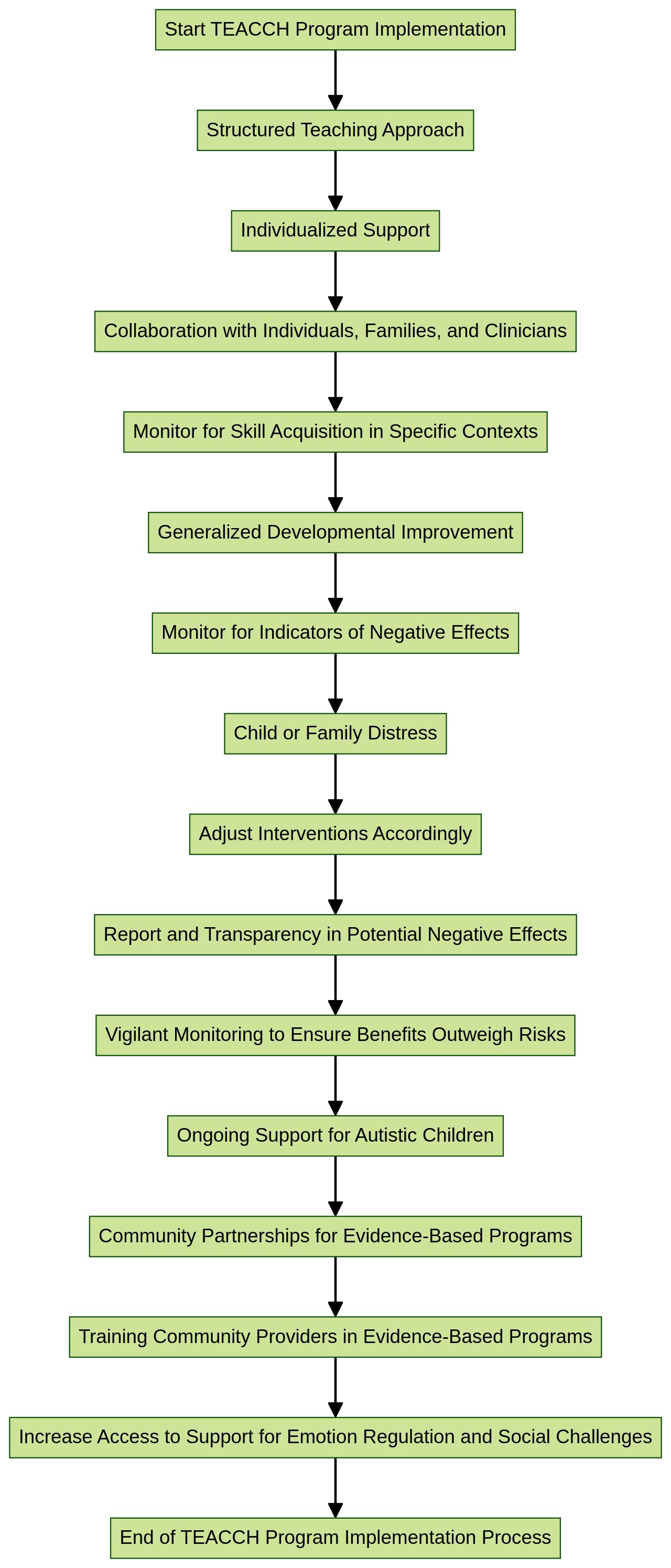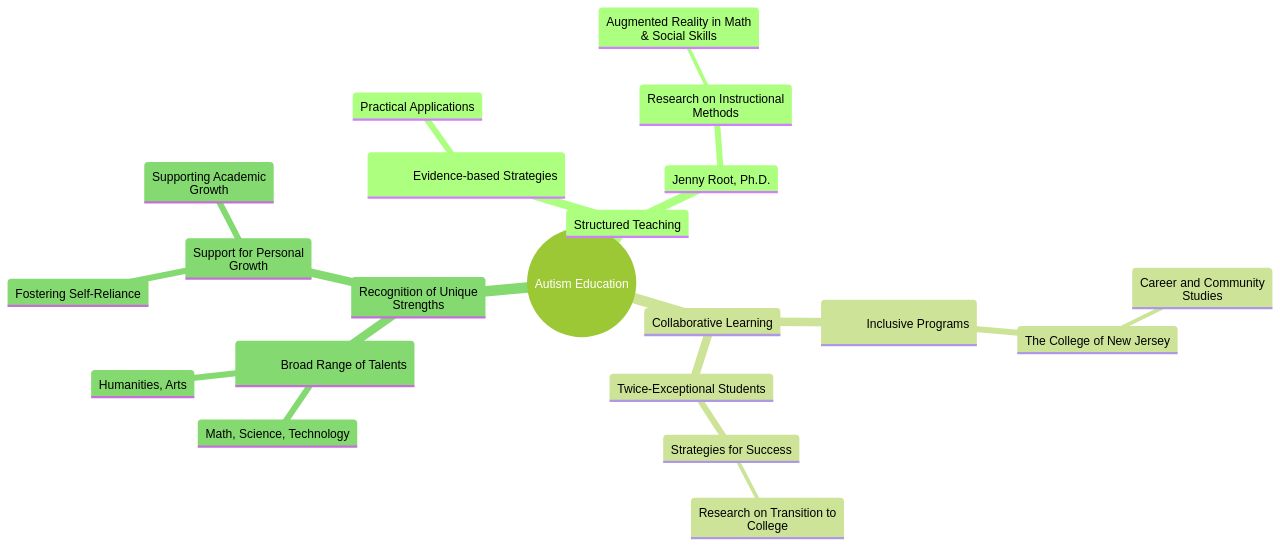Introduction
The Treatment and Education of Autistic and Related Communication-Handicapped Children (TEACCH) program is an evidence-based approach that empowers individuals with autism to achieve autonomy and engage meaningfully in daily life through structured teaching. TEACCH's individualized support aligns with the developmental and behavioral approaches recommended by experts.
The program incorporates visual supports and carefully tailored environmental modifications to create a consistent and visual learning experience that eases anxieties commonly associated with autism. In this article, we will explore the core principles of TEACCH, including structured teaching, visual supports, and environmental modifications, and highlight the importance of selecting effective therapies that enhance communication, social interactions, and independence for those on the autism spectrum.
What is TEACCH?
TEACCH, an evidence-based program, has shown remarkable success in empowering individuals with autism to achieve autonomy and engage meaningfully in daily life through structured teaching. By placing emphasis on fostering a sense of control for those with ASD, TEACCH aligns with the insights from various stakeholders at YAI who champion this approach. One striking case underlines the program's efficacy: a 14-year-old diagnosed with both autism and autoimmune encephalitis.
Despite significant challenges, including running away from home and behavioral outbursts, tailored interventions led to notable improvements in his symptoms. His journey underscores the importance of vigilant monitoring for adverse reactions to treatments, a point echoed by a comprehensive meta-analysis by Sandbank. This analysis revealed the prevalence of low-quality studies and the necessity for transparency in reporting potential negative effects.
Amidst a fractured landscape of intervention strategies, TEACCH stands out for its individualized support, which mirrors the developmental and behavioral approaches recommended by experts. These approaches, ranging from the Early Start Denver Model to speech and language therapy, aim to enhance a range of developmental skills. The effectiveness of these therapies is backed by randomized controlled trials, highlighting gains in language and cognitive abilities.
However, the meta-analysis also points to an alarming lack of adverse event reporting, with three-quarters of studies not describing monitoring procedures, reporting zero adverse events. This starkly contrasts with the 50% of studies that did conduct some form of monitoring. The implication is clear: the success of interventions like TEACCH hinges on meticulous oversight and collaboration between individuals, families, and clinicians to ensure benefits outweigh any risks.

Core Principles of TEACCH
The Treatment and Education of Autistic and Related Communication-Handicapped Children (TEACCH) program stands as a beacon of hope, offering a structured teaching environment that capitalizes on the strengths of individuals with autism. By incorporating visual supports and carefully tailored environmental modifications, TEACCH provides a consistent and visual learning experience that many with autism find reassuring and beneficial.
Its individualized approach has garnered positive feedback from stakeholders at YAI, affirming its efficacy in easing the anxieties commonly associated with autism. The program's adaptability was particularly evident during the extended school year services, which became crucial to prevent the loss of critical skills during breaks, as seen during the COVID-19 pandemic when behavioral problems in individuals with autism intensified.
TEACCH's strategies, including the use of visual schedules and structured work systems, have been instrumental in maintaining educational continuity and addressing challenging behaviors both at home and in school settings. These methods, grounded in the understanding that autism can bring unique skills like exceptional memory and attention to detail, leverage a strengths-based approach to empower individuals with autism to reach their full potential and integrate as valuable members of society. The promising outcomes of TEACCH, along with the broader range of educational treatments available, underline the importance of selecting effective therapies that enhance communication, social interactions, and independence for those on the autism spectrum.
Structured Teaching
As we delve into the realm of structured teaching, it's crucial to understand the nuances that make it effective. By deconstructing tasks into manageable segments and integrating visual aids, we pave a path for learners to grasp concepts with greater clarity and foster self-reliance.
This approach resonates with the findings that direct instruction, which marries the act of probing for comprehension with the engagement of students through challenging queries, significantly boosts learning outcomes. It's about crafting an interactive learning environment where educators and students collaborate, echoing the sentiment that learning is a shared journey.
Reflecting on the innovative assessment methods, such as the tablet-based game used by University of Virginia researchers, we see the potential for nonspeaking autistic individuals to communicate through writing, despite common misconceptions about their literacy capabilities. This breakthrough underscores the importance of adopting tailored educational strategies that recognize and leverage the unique strengths of autism, such as heightened attention to detail and deep-rooted interests in specific topics. By embracing a culture of 'we do' together and fostering a partnership between teachers and students, we not only enhance the learning experience but also affirm the shared humanity and collective intelligence within the classroom. This collective approach not only aligns with the transformative impact of problem-based learning but also ensures that every student, regardless of their abilities, receives the support they need to thrive academically and personally.

Visual Supports
Visual supports are a cornerstone in aiding individuals with autism to navigate their daily lives with greater ease. Research underscores that brain scans reveal distinct structural differences in individuals with autism, which can influence their understanding and communication. These supports act as a bridge, helping to clarify expectations, organize tasks into manageable sequences, and facilitate smoother transitions between activities.
A qualitative study involving parents and caregivers of autistic children, healthcare professionals, and design experts utilized design-thinking approaches to recognize the importance of addressing the needs of autistic children in a variety of environments. Their collaborative efforts highlight the significance of visual supports as part of a strengths-based approach, acknowledging the unique skills and potential of individuals with autism. In real-world application, Dan Harris's advocacy for technology's role in communication for non-speaking autistic individuals further emphasizes the value of visual supports.
His son's use of an electronic tablet to communicate propelled Harris to champion for accessible technology, which he deems 'life-changing.' Furthermore, statistics from a systematic review of Extended Reality (XR), Augmented Reality (AR), and Virtual Reality (VR) technologies in autism therapy suggest a growing need for innovative methods to support emotion recognition and expression in individuals with autism. By integrating visual supports with technology, there is an opportunity to enhance the learning experience and help unlock the potential within each child with autism.
Environmental Modifications
The TEACCH program is designed to foster independence and improve the quality of life for individuals with autism by tailoring the learning environment to their needs. It's grounded in the understanding that autism spectrum disorder (ASD) involves a complex interplay between genetics and environment. This holistic approach is informed by research which suggests that external factors, including one's environment, can significantly impact a person's neurodevelopment and autism symptoms.
In light of the rising prevalence of autism, with CDC data showing an increase from one in 68 children in 2010 to one in 36 in 2020, the importance of such tailored interventions becomes even more apparent. TEACCH's structured setting aims to reduce distractions and enhance visual clarity, aligning with findings from studies like those conducted at the Wendy Klag Center, which emphasize the role environmental modifications can play in achieving the best outcomes for those with autism. By creating an environment that is sensitive to the unique challenges faced by individuals with autism, TEACCH contributes to a supportive framework that enables them to thrive.
Conclusion
In conclusion, the TEACCH program empowers individuals with autism through structured teaching, visual supports, and environmental modifications. This evidence-based approach fosters autonomy and meaningful engagement in daily life.
Structured teaching breaks tasks into manageable segments and integrates visual aids to enhance learning outcomes. Visual supports act as a bridge, clarifying expectations and facilitating smoother transitions.
Environmental modifications create a supportive framework for individuals with autism to thrive. Selecting effective therapies requires collaboration and careful oversight to ensure benefits outweigh risks. Overall, TEACCH's approach enables individuals with autism to reach their full potential by enhancing communication, social interactions, and independence.




